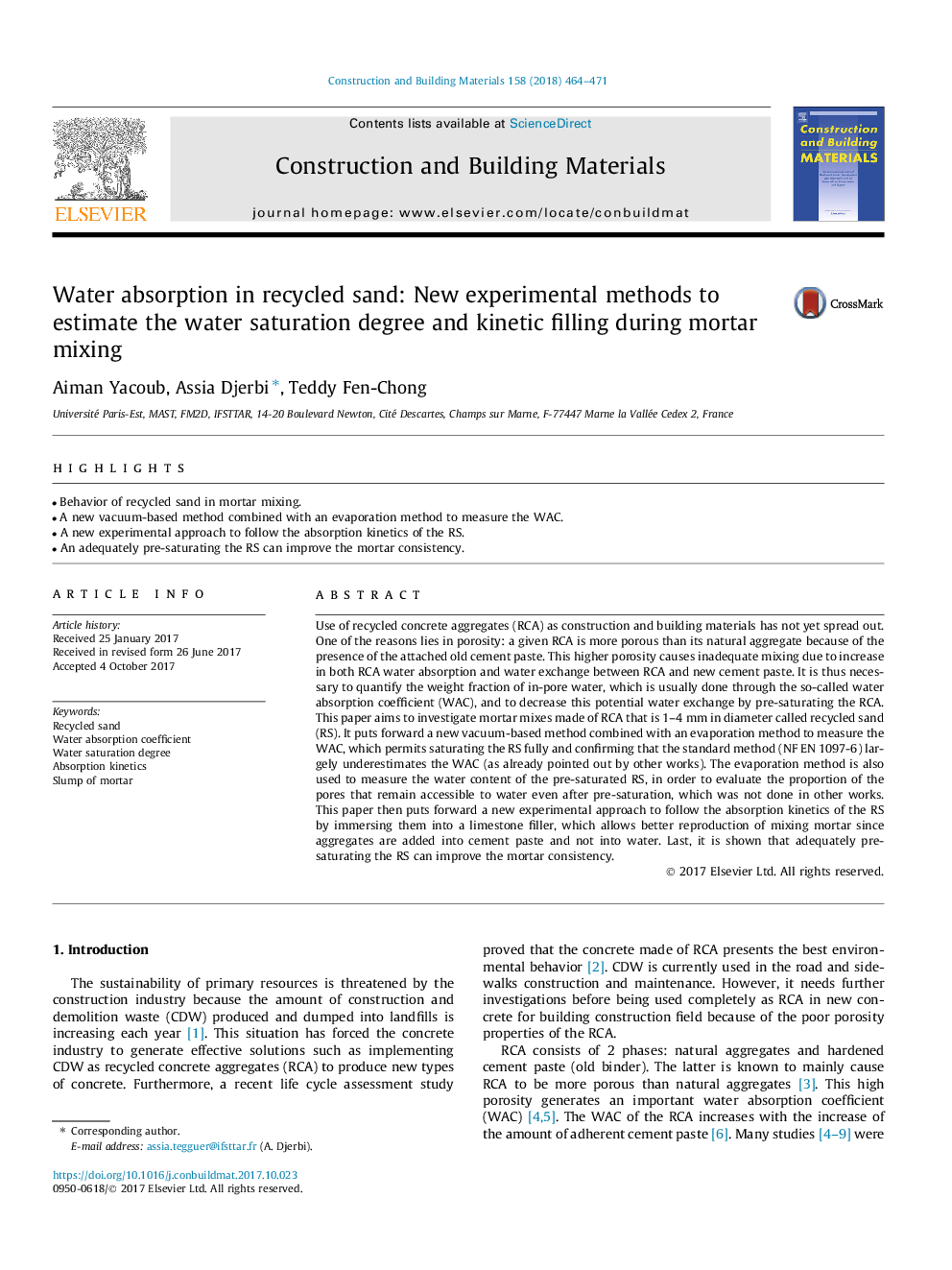| Article ID | Journal | Published Year | Pages | File Type |
|---|---|---|---|---|
| 4912617 | Construction and Building Materials | 2018 | 8 Pages |
â¢Behavior of recycled sand in mortar mixing.â¢A new vacuum-based method combined with an evaporation method to measure the WAC.â¢A new experimental approach to follow the absorption kinetics of the RS.â¢An adequately pre-saturating the RS can improve the mortar consistency.
Use of recycled concrete aggregates (RCA) as construction and building materials has not yet spread out. One of the reasons lies in porosity: a given RCA is more porous than its natural aggregate because of the presence of the attached old cement paste. This higher porosity causes inadequate mixing due to increase in both RCA water absorption and water exchange between RCA and new cement paste. It is thus necessary to quantify the weight fraction of in-pore water, which is usually done through the so-called water absorption coefficient (WAC), and to decrease this potential water exchange by pre-saturating the RCA. This paper aims to investigate mortar mixes made of RCA that is 1-4â¯mm in diameter called recycled sand (RS). It puts forward a new vacuum-based method combined with an evaporation method to measure the WAC, which permits saturating the RS fully and confirming that the standard method (NF EN 1097-6) largely underestimates the WAC (as already pointed out by other works). The evaporation method is also used to measure the water content of the pre-saturated RS, in order to evaluate the proportion of the pores that remain accessible to water even after pre-saturation, which was not done in other works. This paper then puts forward a new experimental approach to follow the absorption kinetics of the RS by immersing them into a limestone filler, which allows better reproduction of mixing mortar since aggregates are added into cement paste and not into water. Last, it is shown that adequately pre-saturating the RS can improve the mortar consistency.
